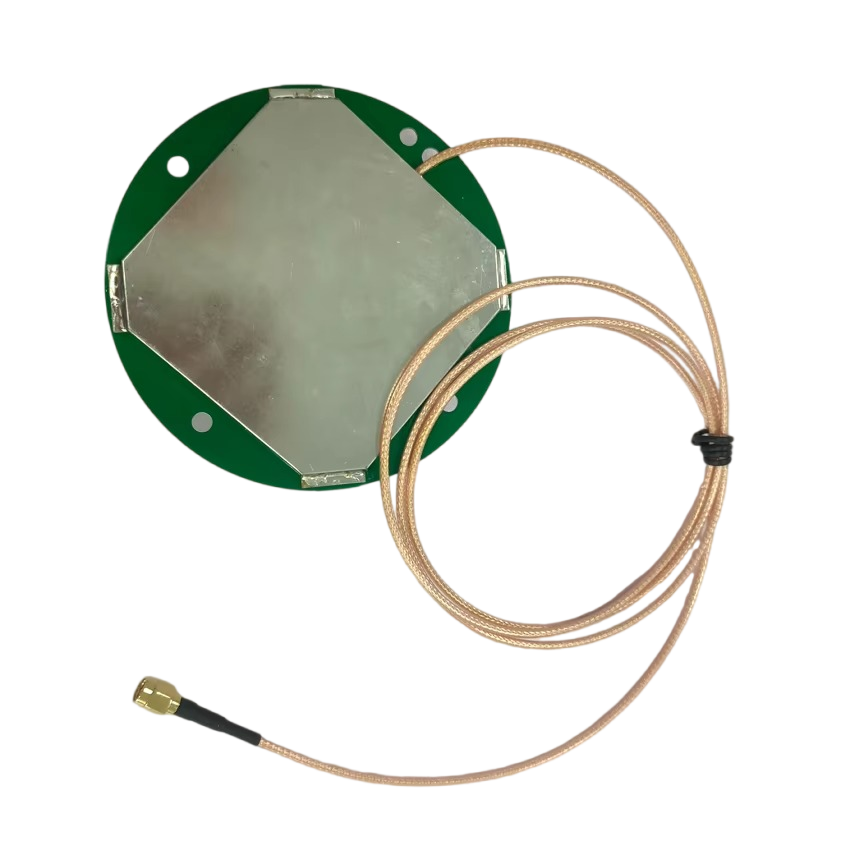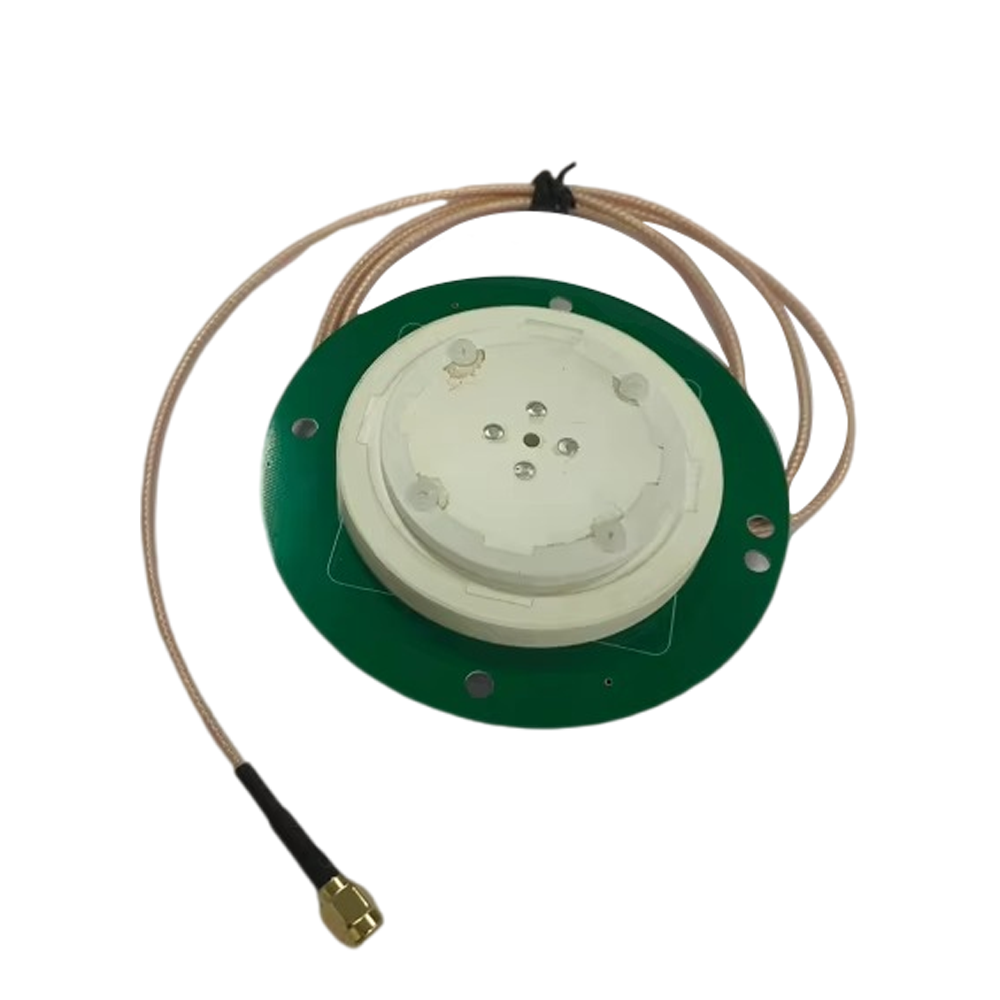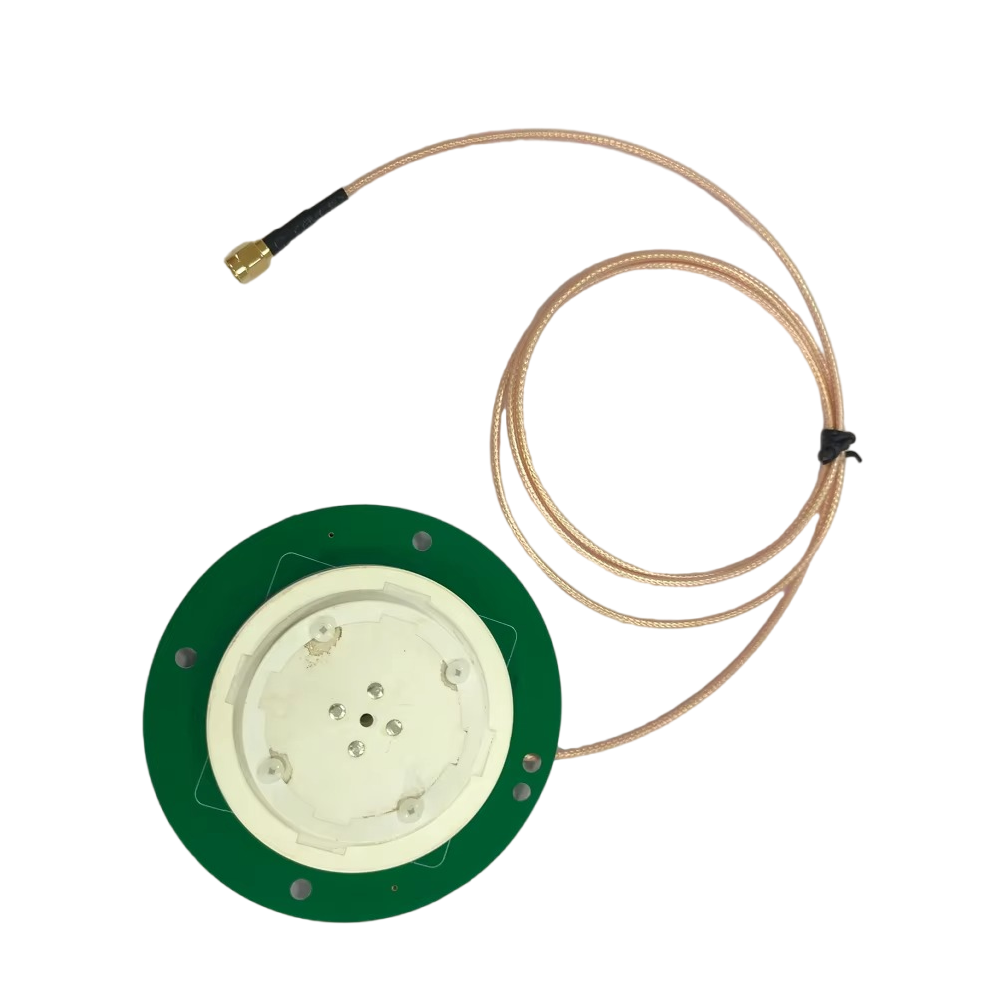Applications
RTK combination antennas with low phase center variation are deployed in applications where both precision and connectivity are critical:
Drone Mapping and Photogrammetry: Drones equipped with these antennas produce highly accurate orthomosaics, 3D models, and digital elevation models (DEMs) without relying heavily on GCPs. For example, in archaeological surveys, drones can map excavation sites with sub-centimeter accuracy, capturing fine details of artifacts or structures. The integrated communication module transmits data in real time, allowing archaeologists to review maps immediately and adjust survey plans as needed.
Autonomous Construction Equipment: Heavy machinery, such as graders and excavators, uses these antennas to navigate construction sites with precision while communicating with a central management system. The low PCV ensures that the equipment follows design plans exactly, reducing over-excavation or under-fill. Real-time data transmission allows supervisors to monitor progress remotely and send updated plans, improving efficiency and reducing errors.
Railway and Road Alignment: In railway construction, these antennas are mounted on survey vehicles to ensure track alignment meets strict standards. The stable phase center ensures that measurements are consistent across the entire rail network, preventing uneven wear and ensuring passenger safety. Communication capabilities allow survey data to be transmitted to a central database, enabling immediate quality checks and compliance reporting.
Precision Agriculture: Autonomous tractors and harvesters use these antennas to navigate fields with sub-centimeter accuracy, ensuring precise seed placement, fertilizer application, and harvesting. The communication module sends data on crop yields, soil moisture, and equipment performance to a farm management system, allowing for real-time adjustments to maximize productivity. Low PCV is critical here, as even small positioning errors can lead to over-application of inputs or missed areas.
Infrastructure Monitoring: Bridges, dams, and tall buildings are monitored using sensors connected to these antennas. The low PCV ensures that tiny structural movements (1–2 millimeters per year) are detected accurately, while the communication module transmits data to a monitoring system. This early warning system helps engineers identify potential failures before they occur, ensuring public safety and reducing maintenance costs.
Future Trends
The development of RTK combination antennas with low phase center variation is shaped by advances in materials science, communication technology, and artificial intelligence:
Nanomaterials for Enhanced Phase Stability: The use of nanocomposite materials, such as carbon nanotube-reinforced ceramics, will improve the thermal and mechanical stability of GNSS elements. These materials have a uniform dielectric constant and low thermal expansion, reducing phase center shifts caused by temperature changes or vibration.
AI-Driven Dynamic Calibration: Machine learning algorithms will enable real-time PCV correction based on environmental conditions. Sensors embedded in the antenna will monitor temperature, vibration, and signal strength, and AI models will adjust the phase center correction in real time, ensuring accuracy even in extreme conditions.
Integration with 6G and LEO Satellites: Future antennas will support 6G communication for ultra-fast data transmission, enabling real-time processing of large datasets (e.g., high-resolution drone imagery). They will also integrate with Low Earth Orbit (LEO) satellite constellations (e.g., Starlink, OneWeb) for global connectivity, ensuring RTK corrections are available even in remote areas.
Miniaturization Without Performance Loss: Advances in manufacturing, such as 3D printing of complex antenna structures, will allow for smaller, lighter antennas with low PCV. This will expand their use in micro-drones and portable devices, where weight and size are critical constraints.
Multi-Sensor Fusion: These antennas will increasingly integrate with other sensors, such as LiDAR, IMUs, and cameras, to create a unified positioning system. Sensor fusion will compensate for temporary GNSS signal loss (e.g., in urban canyons) while maintaining accuracy using data from other sensors, with the low PCV antenna providing a stable reference point.
Conclusion
RTK combination antennas with low phase center variation represent a significant milestone in geospatial technology, merging the precision of low PCV GNSS with the connectivity of integrated communication systems. By minimizing phase center shifts to less than 1 millimeter, these antennas deliver sub-centimeter positioning accuracy, even in dynamic environments, while enabling real-time data transmission. This unique combination makes them indispensable for applications ranging from drone mapping to autonomous construction, where both precision and connectivity are essential.
While challenges such as cost, size, and installation complexity exist, ongoing advancements in materials, calibration, and integration are addressing these limitations. Future antennas will be smaller, more affordable, and more adaptable, with AI-driven calibration and 6G connectivity expanding their capabilities. As industries continue to demand higher accuracy and seamless connectivity, these antennas will play a central role in enabling the next generation of geospatial applications.
In essence, RTK combination antennas with low phase center variation are more than just technical innovations—they are enablers of a future where precision and connectivity work in perfect harmony. Whether mapping remote archaeological sites, building railways, or monitoring critical infrastructure, these antennas ensure that the data collected is accurate, reliable, and actionable, driving progress and innovation across industries.




































































 Language
Language
 En
En Cn
Cn Korean
Korean

 Home >
Home > 







 18665803017 (Macro)
18665803017 (Macro)













